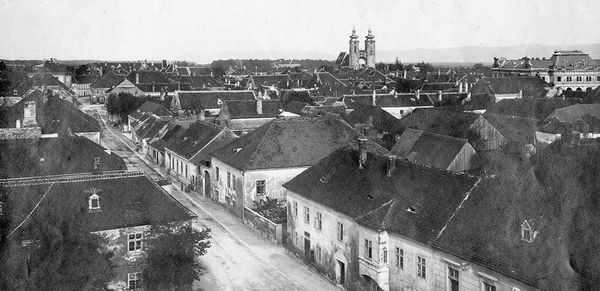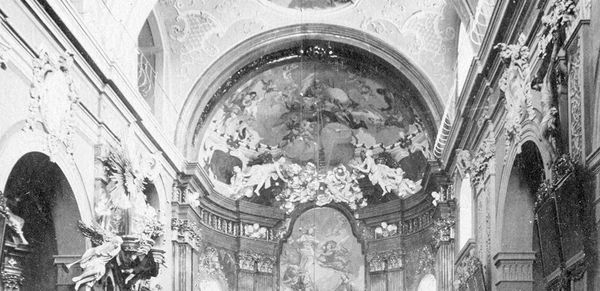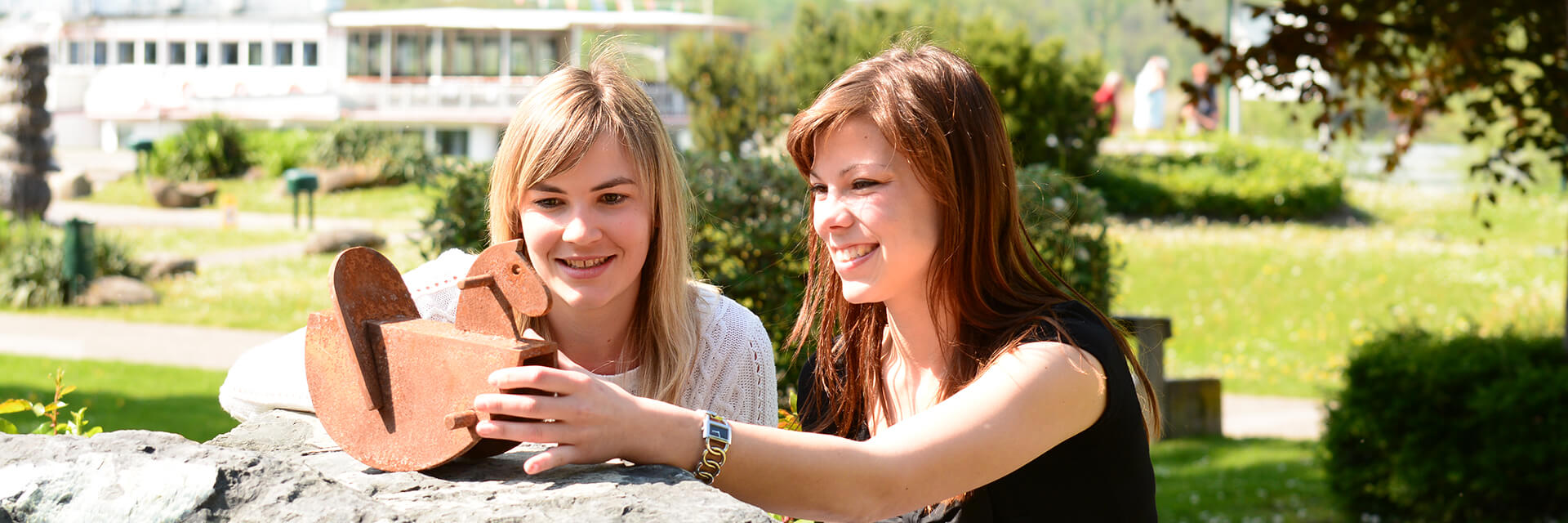Station VIII: Minorite Church
Splendor or: Egon and the martyr
Here you can find out: Who angered the King of Bohemia. Why a secretive confessor died a martyr's death. What secrets the soul hole held.
Start of themed circular route: Tulln main station
Distance: 3.6 km
Duration: approx. 90 min.
Difficulty: easy - barrier-free
Schiele Folder EN
Schiele Folder EN
And what Egon associated with Český Krumlov. Every town that is close to the water needs a special "water saint". In the case of Tulln, this is St. John Nepomuk, vicar general of the Archbishop of Prague around 1390 and confessor to the Bohemian queen. The late baroque Minorite church is dedicated to him. Unadorned on the outside, as befits a mendicant church. Magnificent on the inside: a gold-decorated presbytery with a high altar. A lavishly decorated pulpit with magnificent carvings. Man-high statues in niches and side altars. And above all, colorful ceiling frescoes, painted as vividly as if the figures were alive. It's not just the children who are amazed, adults also like to be distracted by the dramatic scenes in the church dome when the Latin high mass takes too long.


[Translate to English:]
Thrown from a bridge.
“Johannes as Confessor of the Queen of Bohemia.” “The Saint’s Pilgrimage to Altbunzlau.” “The Saint Being Thrown off the Bridge.” These are the titles of the cycle of frescos depicting John of Nepomuk. This man of character impressed the people of Tulln. King Wenceslaus pushed him to reveal the queen’s alleged affairs but he remained steadfast and refused to violate the seal of the confessional. They tortured him with torches. And he died a martyr in the icy waters of the Vltava. He was canonized in 1729. Construction was in full swing at the Church of the Friars Minor at the time. And this water saint was the perfect patron saint for the church and the town.
![[Translate to English:] Spätbarocke Minoritenkirche [Translate to English:] Spätbarocke Minoritenkirche](/fileadmin/_processed_/f/3/csm_8_Minoritenkirche_img278_628px_komp.jpg_a64b670d79.jpg)
[Translate to English:] Late Baroque Church of the Friars Minor
Venice on the Vltava.
The Vltava has a very special meaning for Egon. Because unlike many people from Tulln who have never traveled beyond the city limits, he has a second home: Český Krumlov in Bohemia, the birthplace of his mother. Even as a small child, he spent a lot of time in the "Venice on the Vltava", as Krumlov is also known. The interlocking houses, the old walls and gates fascinated and appealed to him in a picturesque way. Hardly any other place would later inspire him to paint as many cityscapes and landscapes as the Renaissance town.
General plan



